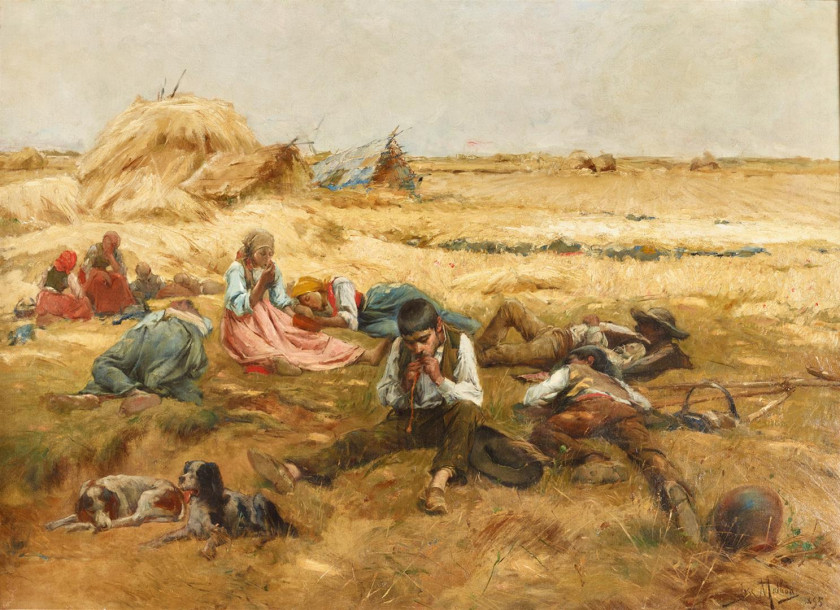A Sesta dos Ceifeiros [The Reaper's Nap]
painting


1895
Oil on canvas
95 x 132 cm
Known as the most Portuguese of the Portuguese artists, José Malhoa went into art history as a painter of the habits and scenes of popular life.
A Sesta dos Ceifeiros dates from the last decade of the 19th century and belongs to the period after the Grupo do Leão round tables (1881-1889), a group of artists headed by Master Silva Porto, which involved other artists, like the brothers Bordalo Pinheiro and which sought the affirmation of Naturalism in Portugal.
In this work, Malhoa fixes in a faithful and objective way a common scene of a rural world and the habits of the working classes. The large-scale canvas portrays a group of young peasants, men and women, accompanied by two dogs, enjoying a break from the day of harvest. On the foreground, in the axis of the painting, we see a young man sitting down, by his side another two men rest lying down, right behind a young girl eats something from a bowl, surrounded by other girls who rest against the harvested wheat field, while in the background some women talk.
With fluid and impressive brush strokes, without defining the outlines of the shapes, nor details, but with a strong suggestion of the ensemble, Malhoa creates a division in two planes, strongly oriented towards the horizontal. The superior half is constituted by the background landscape, a neutral clear sky and a wide field with haystacks, covered by the luminosity of the Summer sunshine. The inferior half of the painting, concentrates the figures spread out in the field, with a more sombre tone, suggesting the shade of a tree and a cooler area, fit for a resting pause. The position of the figurative elements and the small chromatic details, given by the headscarves, skirts or waistcoats with which the young women are dressed, contribute to a subtle dynamic. A picturesque moment, to which Malhoa lends an intense serenety and suggestive silence.
The field theme is repeated in various works of this artist, such as Cócegas or Espantando os Pardais da Seara. Malhoa gave preference bright sunlit outdoor scenes, revealing of the habits and practices of the rural populations, in particular of the Beira region from where he was born, leaving as legacy a pleasant memory, deprived of ideological connotations.
Adelaide Ginga